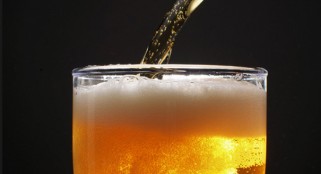Although it doesn’t take a rocket scientist to know that foamy drinks splish-splash less than drinks with no foam, it does take a team of liquid physicists to tell us why.
A complex fluid group at Princeton University first noticed the phenomenon in the real world. The study was ignited by now assistant professor at NYU Polytechnic School of Engineering, Emilie Dressaire, according to the Washington Post.
.Dressaire started to think about the integrity of foamy liquids while getting a latte to-go at Starbucks. As she reached for a lid stopper to keep her hot latte from spilling, the barista informed her she wouldn’t need one.
Similarly, her colleague, Alban Sauret, now a researcher at the French National Center for Scientific Research, noticed the same difference as he carried pints of Guinness beer across a crowded bar.
To scientifically confirm their findings, the scientists created an experiment. The team filled a glass container with water, dish soap and glycerol, which is used to make liquids more viscous in the lab. Then they created uniform layers of tiny bubbles into the liquid.
The liquids became foamier and foamier as the containers were rocked back and forth. As to their prediction, their foam made the liquid more stable. This is because the foam was diffusing the energy of the sloshing around by way of friction against the container. Layers of foam on top do not move or come into contact with the container, so they’re not sharing the energy burden.
It seemed that the foamy layer on top of the liquids was to thank for the lack of spillage. But why would this realization mean anything to scientists?
The researchers said that the findings in this study could be used for industrial applications. Their focus was not simply on latte and beer foam, but on how foam could be used in various processes in which sloshing needs to minimized, particularly in the transportation of dangerous liquids such as hazardous waste or oil.

Leave a Reply